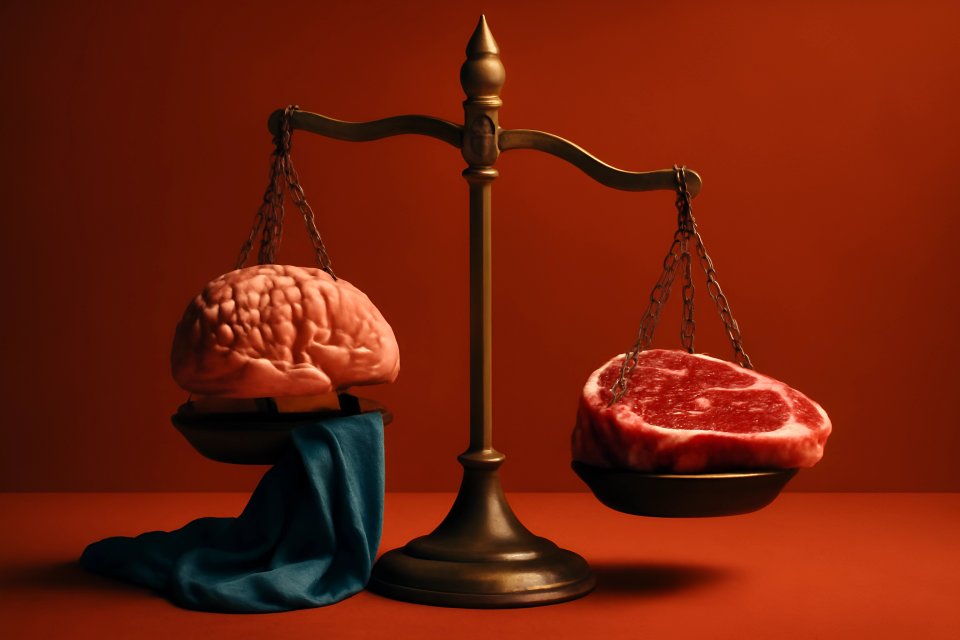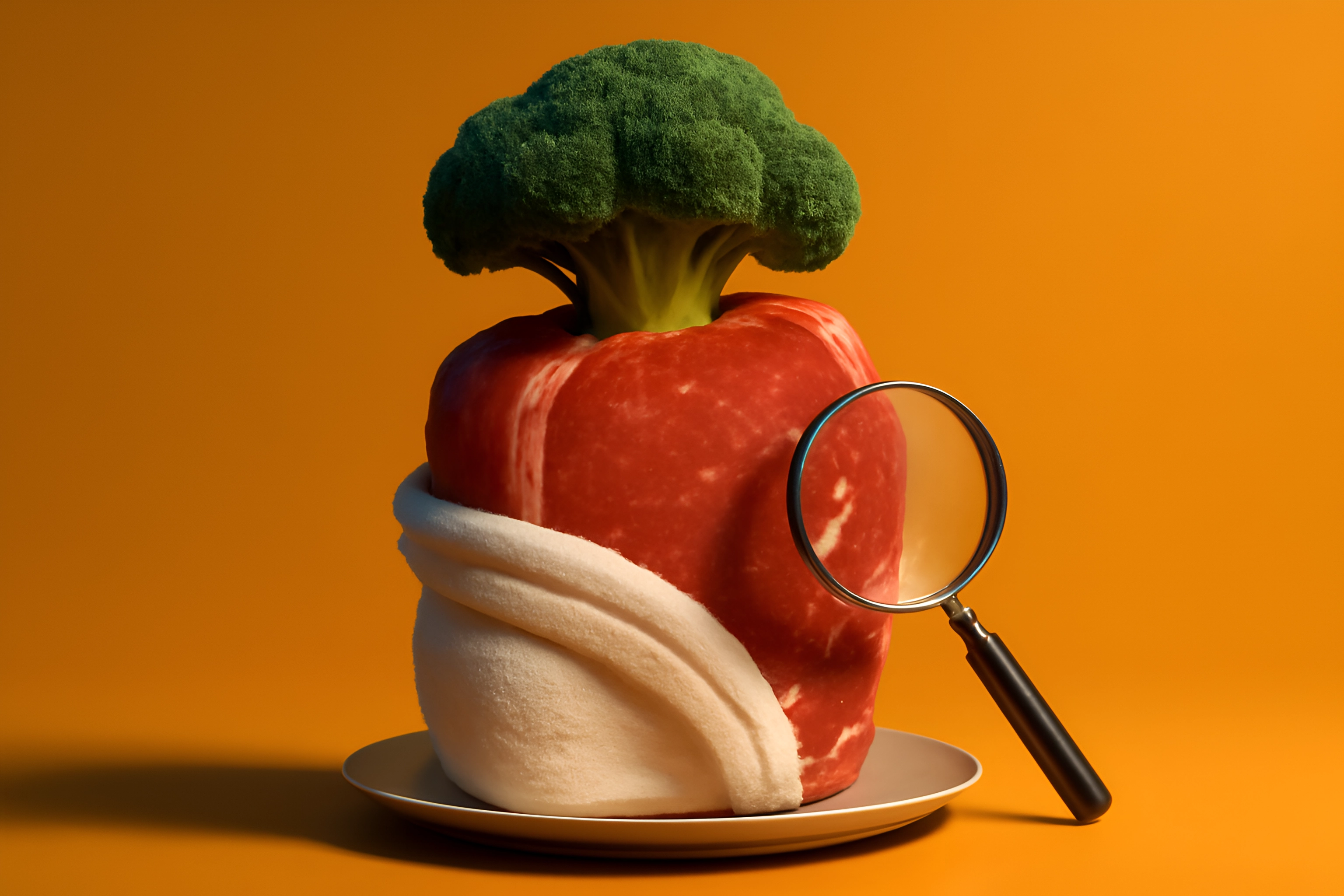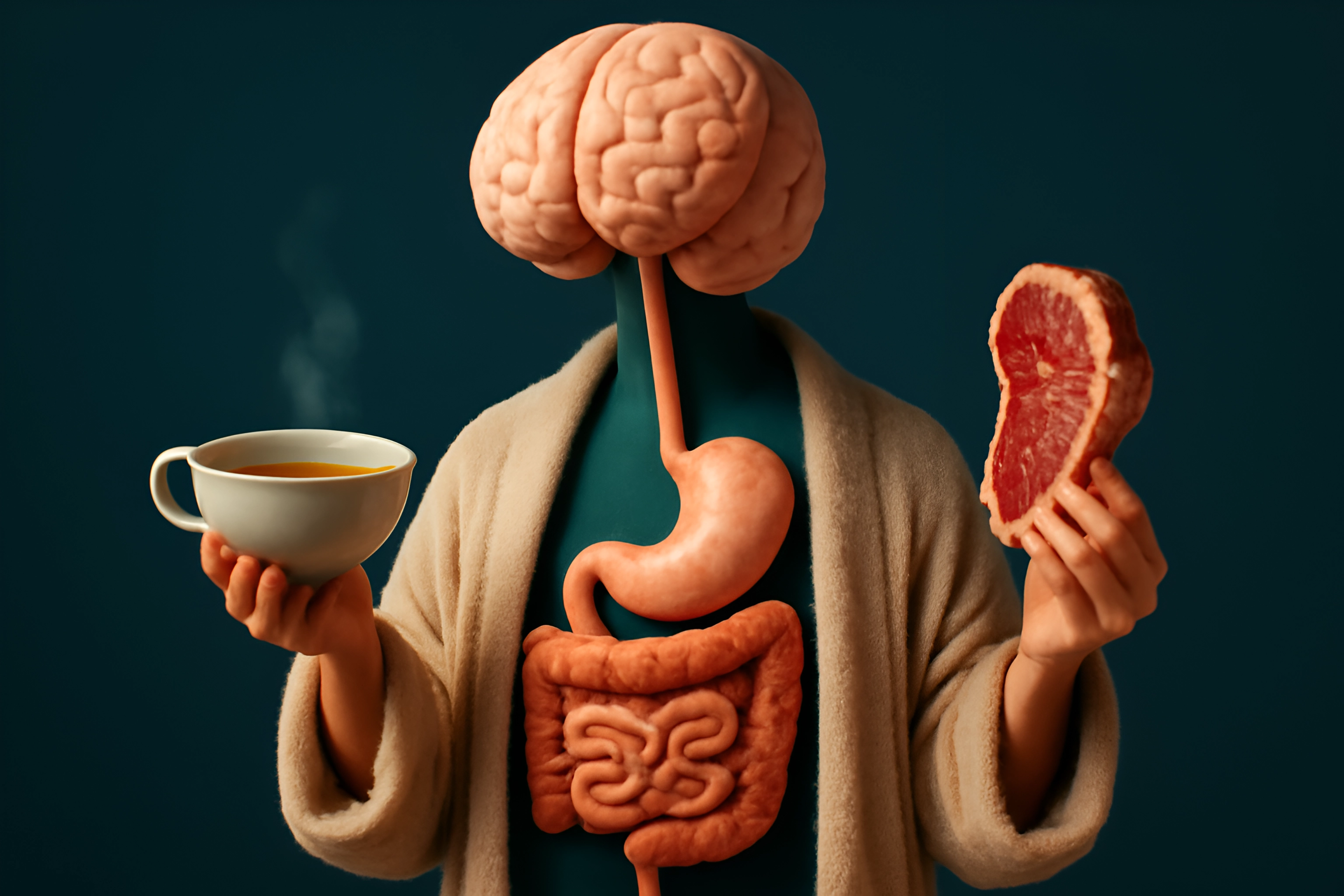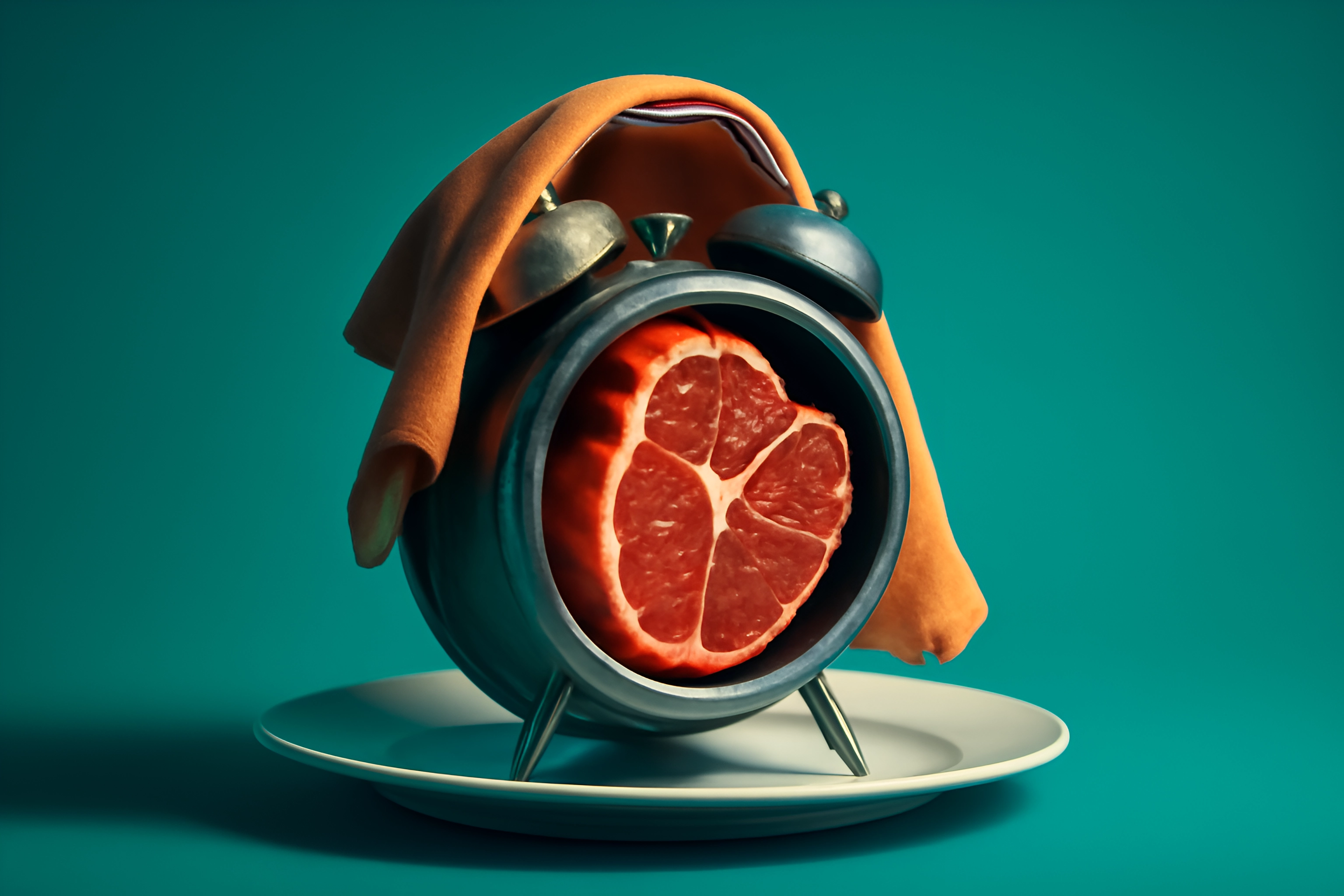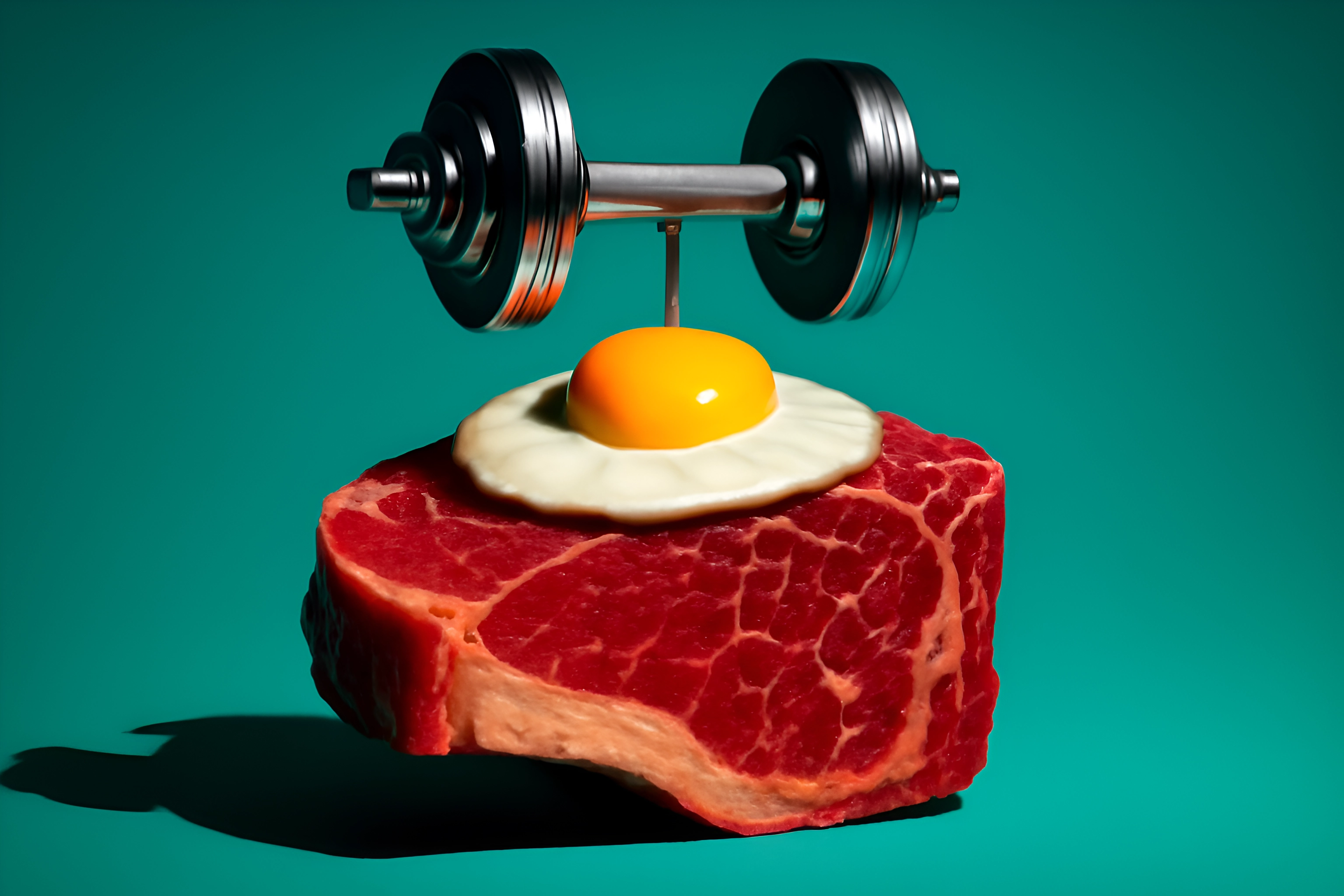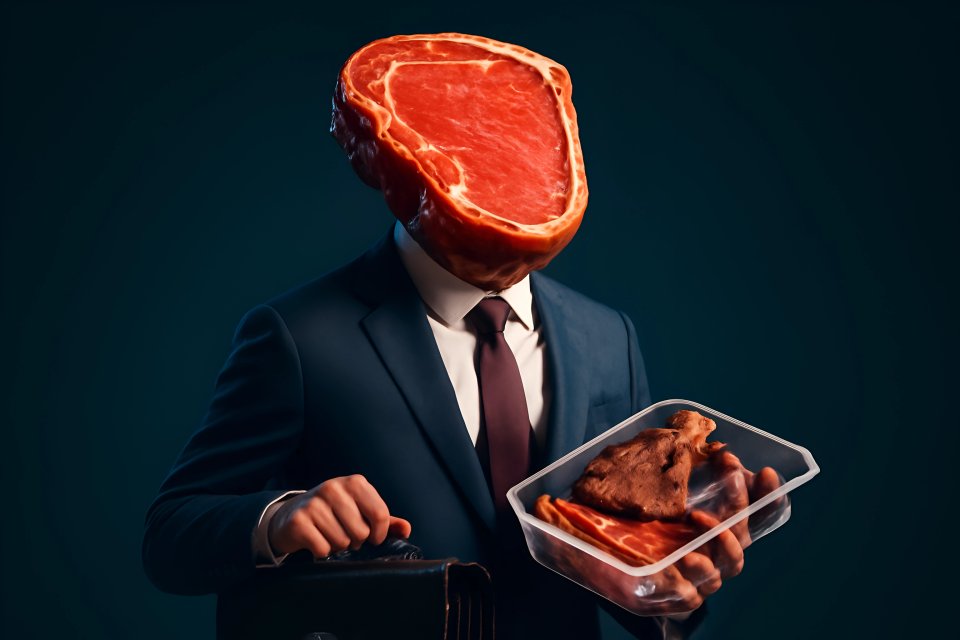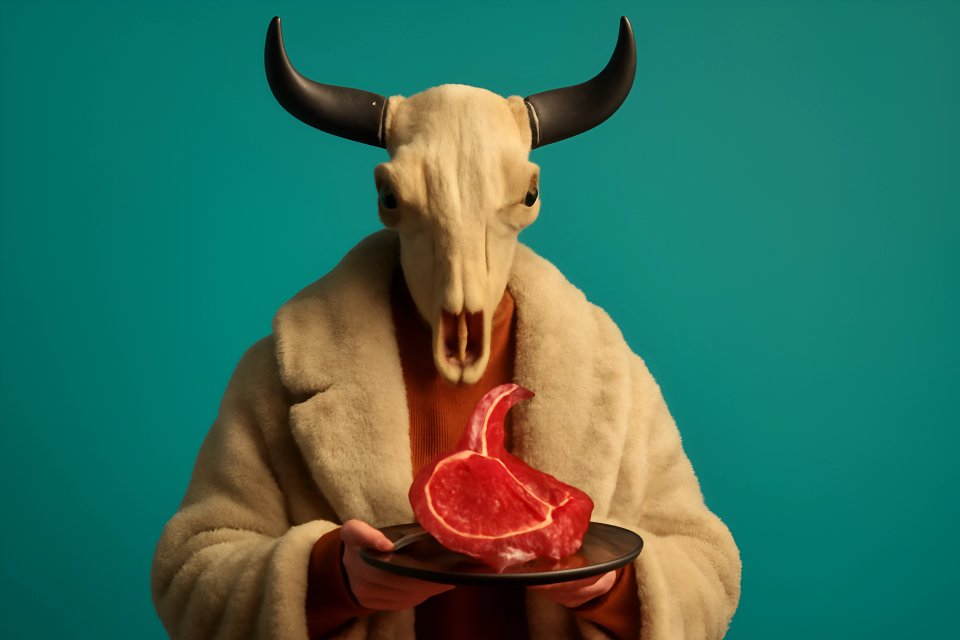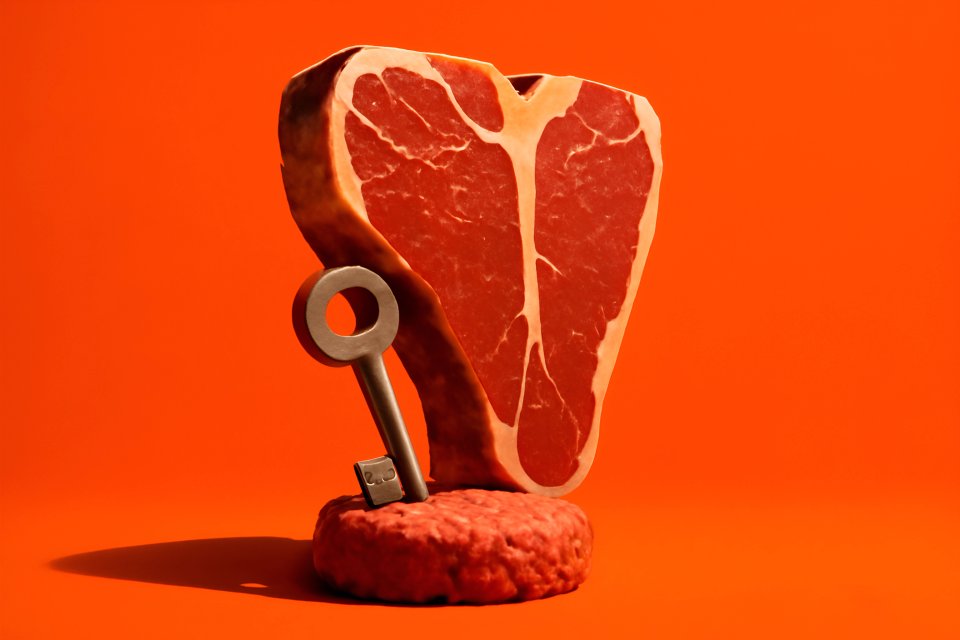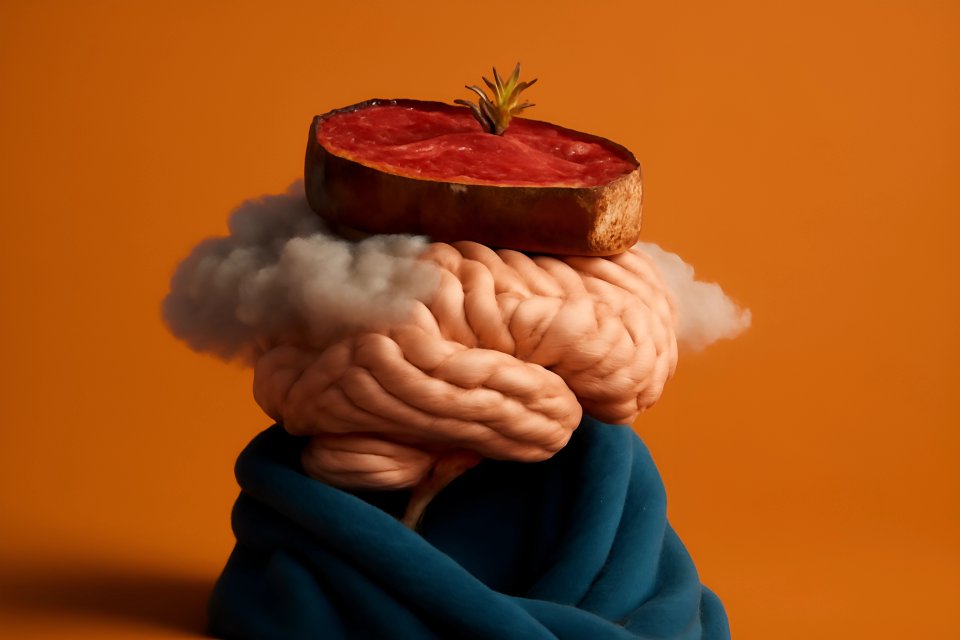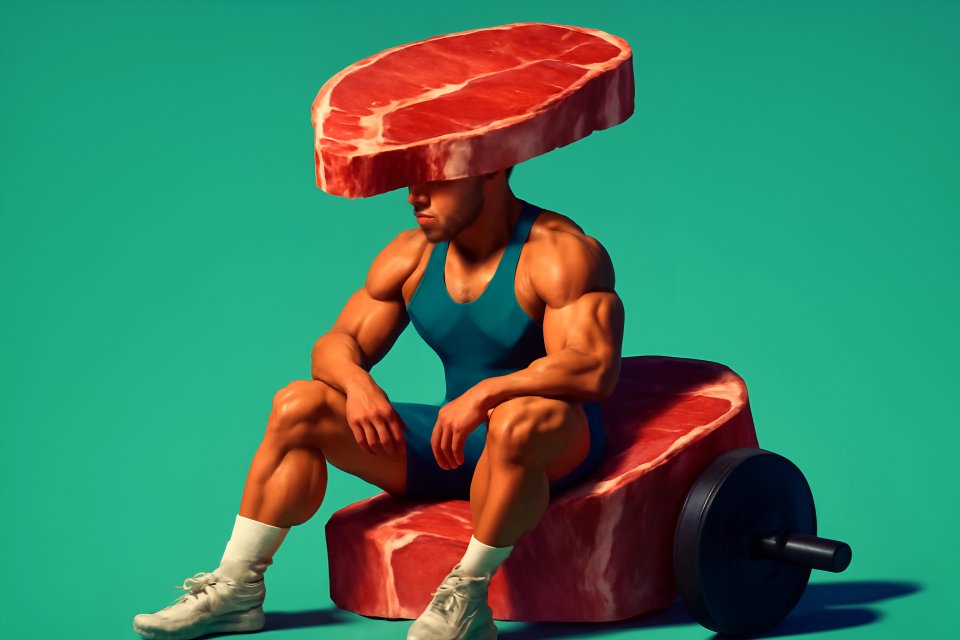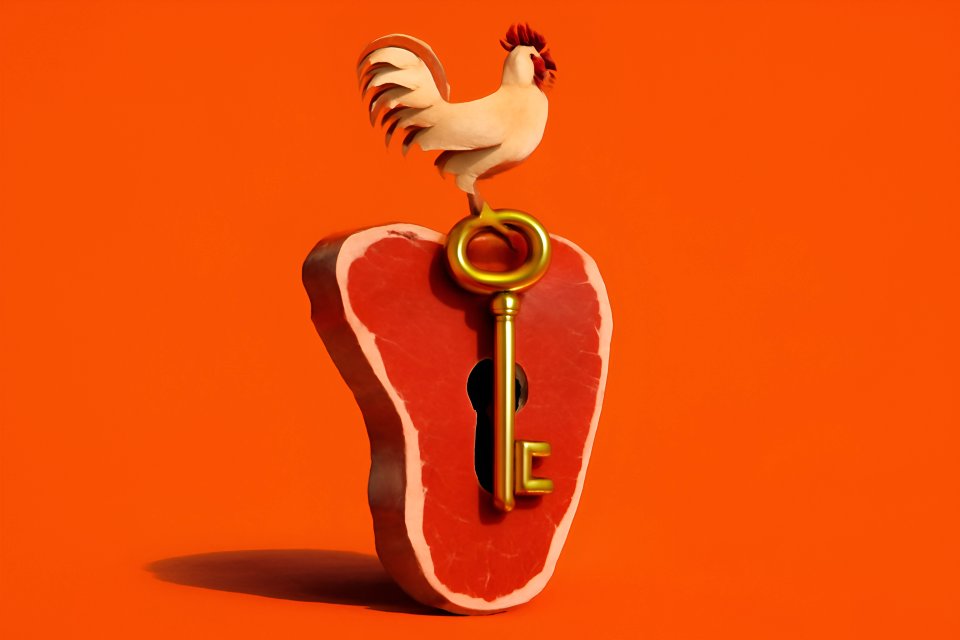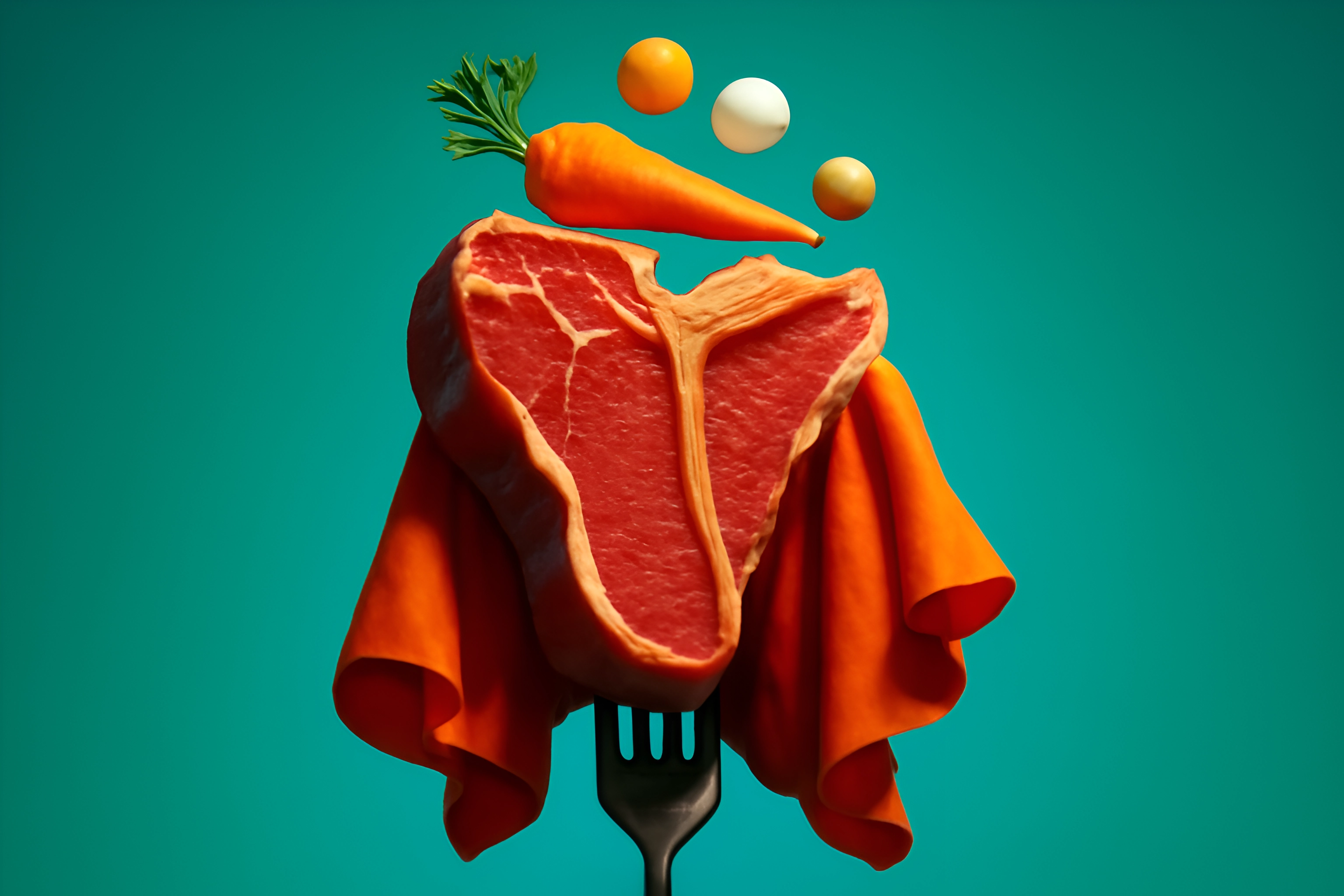
They all ask it, don't they? You tell someone you’re healing your body with a carnivore diet, and the first words out of their mouth are a cocktail of concern and disbelief: "But where do you get your vitamins?" It’s a question born from decades of nutritional dogma that has pushed plants as the sole source of wellness, leaving animal foods misunderstood and maligned.
This isn't just about proving them wrong. This is about your survival, your vitality, your deep-seated desire to reclaim the health that has been stolen from you by chronic illness and misinformation. You didn't come this far to simply survive on steak and water; you came here to thrive. The secret isn't just eating meat—it's about understanding how to eat meat to unlock its profound healing potential.
Forget the noise and the doubt. This post is your definitive guide to transforming your carnivore diet from a simple elimination protocol into a powerhouse of bioavailable nutrition. We will show you exactly how to achieve peak nutrient density on a carnivore diet, ensuring you have every raw material your body needs to rebuild, repair, and perform at a level you may have forgotten was possible.
The Bioavailability Advantage: Why Animal Nutrients Are Superior
Let's get one thing straight: a nutrient listed on a label means nothing if your body can't use it. This is the core concept of bioavailability, and it’s where animal-based nutrition leaves plants in the dust. Your body isn't a chemistry lab that treats all vitamins and minerals equally; it's a biological system that craves nutrients in their most recognizable and absorbable forms.
Consider iron. Plant-based, non-heme iron is notoriously difficult for the body to absorb, with efficiency rates as low as 3-20%. In stark contrast, the heme iron found exclusively in animal tissue boasts an absorption rate of 15-35%, bypassing the biological roadblocks that hinder its plant-based counterpart. This isn't a minor difference; it's a game-changer for energy, oxygen transport, and overall vitality.
This superiority extends across the board. The myth of carnivore-induced scurvy crumbles when you learn that fresh meat contains vitamin C, and organs like spleen deliver a stunning 45.5 mg per 100g—more than enough when you're not battling glucose for cellular uptake. Furthermore, animal foods present nutrients in perfect synergy. The fat in a ribeye isn't just for flavor; it's essential for absorbing the critical fat-soluble vitamins A, D, E, and K, creating a complete nutritional package in every single bite.
The Carnivore Food Pyramid: Prioritizing for Peak Nutrient Density
To truly harness the power of this way of eating, you need a strategy. Think of it as a pyramid, with each level building upon the last to create an unbreakable foundation for your health. This isn't about restriction; it's about intelligent prioritization.
Level 1 (The Foundation): Ruminant Muscle Meat & Fat
This is your bedrock. The non-negotiable foundation of a healing carnivore diet is the muscle meat and fat from ruminant animals like beef, bison, and lamb. Forget the lean, skinless cuts the old paradigm pushed on you; your body craves the energy and nutrients found in fatty cuts like ribeye, chuck roast, and brisket.
These foods are your primary source of the building blocks for life. A single serving of beef delivers a payload of highly absorbable heme iron, zinc for immune function, and B12 for neurological health. It also provides powerful, meat-exclusive compounds like creatine, with beef containing around 350mg per 100g, which directly fuels your muscles and brain, and carnosine, which fights cellular damage and the aging process.
This is where your journey to renewed strength begins. Ruminant meat and fat provide the consistent, clean-burning fuel and essential minerals your body needs to repair tissues, stabilize your mood, and sharpen your cognitive function. Make this the centerpiece of your plate, every single day.
Level 2 (The Powerhouse): Organ Meats
If ruminant meat is the foundation, organ meats are the steel framework that makes the entire structure invincible. This is where you find the most concentrated sources of vitamins and minerals on the planet, period. For anyone serious about using this diet to reverse chronic issues, organs are not optional—they are essential for true nutrient optimization on an animal-based diet.
Beef liver is the undisputed king. It is nature's most potent multivitamin, with a 100g serving providing an almost unbelievable 1,048% of your daily value for Vitamin A (retinol) and 2,917% for Vitamin B12. Beef heart is the single best food source of CoQ10, a vital compound for cellular energy that supports cardiovascular health. Kidney is packed with selenium for thyroid function and B vitamins, while spleen offers a surprising dose of vitamin C.
Don't be intimidated. These are the superfoods of the animal kingdom, the secret weapon for accelerated healing. Incorporating them into your diet provides your body with a flood of nutrients in their most perfect, bioavailable forms, giving your systems the ammunition they need to fight inflammation and restore function.
Level 3 (The Specialists): Seafood & Fatty Fish
While the land provides the foundation, the sea provides the specialists. Fatty fish and seafood deliver critical nutrients that are less abundant in terrestrial animals, primarily the anti-inflammatory omega-3 fatty acids DHA and EPA, as well as iodine and vitamin D.
Wild-caught salmon, sardines, mackerel, and herring are your primary targets. A 100g serving of salmon not only provides a powerful dose of omega-3s but also 85% of your daily selenium needs, a key mineral for antioxidant defense. Oysters are legendary for their zinc content, with a single serving blowing past daily requirements, making them a powerhouse for immune and hormonal health.
These foods are your inflammation-fighting special forces. The DHA and EPA they provide are crucial for building healthy brain cells, calming systemic inflammation, and supporting a balanced mood. Making fatty fish a regular part of your routine is a non-negotiable strategy for long-term brain health and cardiovascular security.
Level 4 (The Supporters): Eggs & Well-Tolerated Dairy
At the peak of the pyramid are the supporters: foods that add incredible nutrient density for those who tolerate them well. Pasture-raised eggs and high-quality, fermented dairy like ghee, hard cheeses, and kefir can round out your nutritional intake beautifully.
The yolk of an egg is a nutritional goldmine, packed with choline for brain health, lutein for eye health, and selenium. A single large egg yolk contains around 31% of your daily choline requirement, a nutrient critical for building cell membranes and producing neurotransmitters. Fermented dairy, if tolerated, is one of the best sources of Vitamin K2, which works in synergy with Vitamin D to ensure calcium is deposited in your bones and teeth, not your arteries.
This level requires self-awareness. For many, these foods are a welcome addition, but for those with sensitivities to egg whites or dairy proteins like casein, they can be problematic. Listen to your body. If they work for you, they are a fantastic tool for enhancing your diet's nutrient profile.
Practical Strategies: How to Implement a Nutrient-Dense Carnivore Diet
Knowing what to eat is one thing; putting it into practice is another. You don't need complicated apps or obsessive tracking. You need simple, sustainable habits that become second nature.
Strategy 1: Adopt a "Nose-to-Tail" Mindset
This sounds more intimidating than it is. You don't have to eat a brain for breakfast tomorrow. Start small by committing to eating liver. Aim for just 3-4 ounces of beef liver, one or two times per week. The easiest way to start is by finely dicing it and mixing it into ground beef—you'll barely notice the taste but will reap all the benefits.
Strategy 2: The "SMASH" Rule for Fish
To get the most omega-3s with the least exposure to mercury, focus on the SMASH fish. This stands for Salmon, Mackerel, Anchovies, Sardines, and Herring. These are small, oily fish that are packed with DHA and EPA. Aim for two servings per week to keep your inflammation levels low and your brain sharp.
Strategy 3: Make Bone Broth a Staple
Bone broth is a healing elixir. It's rich in collagen and gelatin, which help repair the lining of your gut, and it provides easily absorbed minerals like calcium, magnesium, and phosphorus. Make a large batch on the weekend and sip a warm cup each day. It’s a simple ritual that provides profound benefits for your joints, skin, and digestive system.
Strategy 4: A Simple Nutrient-Tracking Method (Without the Apps)
Forget spreadsheets. Use this simple mental checklist at the end of each week to ensure you're covering your bases:
- Have I had red meat 5-7 days this week?
- Have I had organ meat 1-2 times this week?
- Have I had fatty fish 1-2 times this week?
- Have I had eggs/dairy (if tolerated) a few times this week?
Most importantly, learn to listen to your body. Cravings are not your enemy; they are your body's communication system. A sudden, intense craving for a juicy steak could be your body signaling a need for iron. Feeling a dip in energy? It might be time for some B-vitamin-rich liver or heart.
Quick Reference: Top Carnivore Sources for Essential Vitamins & Minerals
For a quick, scannable guide, here are the champions for key nutrients in the animal kingdom.
- Vitamin A (Retinol): Beef Liver, Cod Liver Oil, Egg Yolks
- B Vitamins (B12, Folate, etc.): Liver, Kidney, Red Meat
- Vitamin D: Fatty Fish, Egg Yolks, Suet/Lard
- Vitamin K2: Ghee, Hard Cheese, Egg Yolks, Liver
- Iron: Red Meat, Spleen, Liver
- Magnesium: Bone Broth, Mineral Water
- Potassium & Sodium: Meat itself contains potassium. Emphasize salting food to taste to maintain electrolyte balance, especially during adaptation.
- Iodine: Seafood, Egg Yolks, Dairy
- Copper: Beef Liver, Oysters
Conclusion: Your Path to Radical Transformation
Let's be clear. A well-formulated carnivore diet is not about restriction; it is the ultimate form of nutritional abundance. By prioritizing ruminant meat, embracing organ meats as nature's super-supplements, and strategically including fatty fish, you build a diet that is dense, synergistic, and profoundly healing. You are giving your body every tool it needs to conquer inflammation, restore metabolic health, and build a fortress of vitality.
This is your path forward. Taking control of your optimal mineral and vitamin intake on carnivore is the most powerful step you can take on your journey to reclaim the vibrant health you deserve. You now have the knowledge and the strategy to build a diet that heals you from the inside out, cell by cell. The transformation is not just possible; it's inevitable.
What's your favorite nutrient-dense carnivore meal? Share it in the comments below to inspire others!
If you're ready to build a solid foundation, start by understanding the truth about this way of eating in our guide, Debunking Common Myths: Is the Carnivore Diet Really Lacking Fiber?
